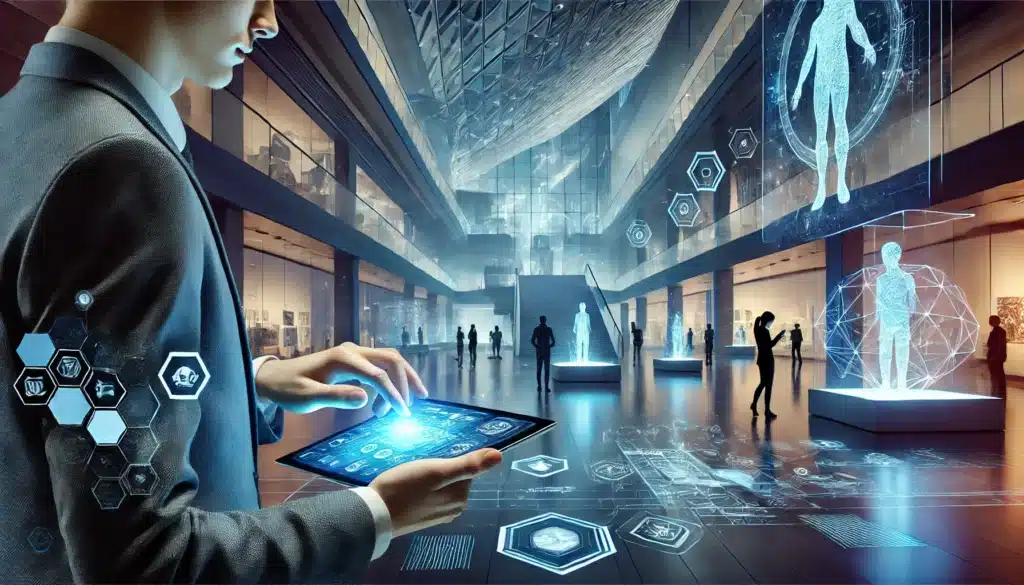Introduction
In the contemporary museum context, long-term strategic planning is critical to ensure the growth and sustainability of cultural institutions. A well-structured multi-year strategic plan for museums not only defines goals and operational strategies, but also establishes key performance indicators (KPIs) to monitor progress and adapt to emerging challenges.
This article offers detailed guidance on how to effectively develop and monitor a multi-year strategic plan for museums.
What is a multi-year strategic plan for museums?
A multi-year strategic plan is a document that outlines the vision, mission, and long-term goals of a museum, usually over a 3-5 year time frame. This plan serves as a roadmap, guiding operational decisions and allocating resources in a manner consistent with the institutional mission. For example, the Bologna Civic Museums Sector recently unveiled its Integrated Strategic Plan 2025-2029, focusing on innovation, social value, sustainability, participation, collections, and networking.
Key steps in designing the multi-year strategic plan for museums
1. Preliminary analysis
First, it is essential to conduct aSWOT (strengths, weaknesses, opportunities and threats)analysis to understand the museum’s current position. This internal and external assessment provides a solid basis for strategic goal setting.
2. Definition of mission and vision
The mission describes the fundamental purpose of the museum, while the vision represents thefuture aspiration. A clear articulation of both guides the strategic direction and inspires the team.
3. Establish strategic goals
Goals should be SMART . SMART is an acronym for the 5 basic qualities that a goal must possess: SPECIFIC (specific), MEASURABLE (measurable), ACHIEVABLE (attainable), RELEVANT (relevant), TIME-BASED (time-based). For example, increasing the number of visitors by 20 percent within two years is a SMART goal.
4. Development of strategies and actions
For each goal, outline specific strategies and detailed action plans. This could include educational programs, community partnerships or digital marketing initiatives.
5. Resource allocation.
Determine the resources needed, both financial and human, and ensure that they are allocated efficiently to support planned strategies.
Monitoring and evaluation of the multi-year strategic plan for museums
Once the multi-year strategic plan is implemented, it is crucial to continuously monitor progress through key performance indicators (KPIS).
Identification of museum KPIs
KPIs are metrics used to evaluate the effectiveness of implemented strategies. In the museum context, some relevant KPIs include:
- Number of visitors: Monitor attendance to assess the attractiveness of exhibitions and activities.
- Audience engagement: Measured through satisfaction surveys, event attendance and social media interactions.
- Visitor satisfaction: assessable through a feedback collection system through questionnaires for example.

Tools for monitoring data
The adoption of advanced technological tools facilitates the collection and analysis of data needed to assess KPIs. For example, many Italian museums are choosing the amuseapp’s intuitive and efficient data monitoring system..
Benchmarking and comparison
Comparing one’s KPIs with those of similar institutions can offer insights for improvement. A significant example is the museum benchmarking project carried out by the Musei Reali of Turin, Palazzo Ducale of Mantua and Gallerie Estensi of Modena, with the support of the Milan Polytechnic, which developed a model for measuring the impact of museums on society.
Importance of digitization in strategic planning
Digitization plays a crucial role in the modernization of museums and their ability to reach a wider audience. However, research by the Digital Innovation for Culture Observatory of the Politecnico di Milano showed that only one-third of Italian museums have a long-term strategic plan for digitization.
This figure underscores the need to integrate digital transformation into multi-year strategic plans to remain competitive and relevant.
Conclusion
Planning and monitoring a multi-year strategic plan is essential to the long-term success of museums. By clearly defining strategic goals, using relevant museumKPIs, and monitoring data with appropriate tools, museums can improve their efficiency, attractiveness, and social impact.
Investing in digitization and data analytics is no longer an option, but a necessity to ensure the sustainability and innovation of cultural institutions. By following a methodical and evidence-based approach, each museum can develop an effective, adaptable and growth-oriented multi-year strategic plan.
amuseapp – the digital revolution for cultural places
amuseapp is more than just an audio guide-it is an innovative digital platform that transforms the visitor experience and helps museums increase revenues.
Customized itineraries with theArtificial Intelligence. Unlike traditional audio guides, amuseapp uses artificial intelligence to create customized itineraries based on the needs of each visitor: children, people with sensory disabilities, experts, students, and many other categories.
Accessibility in 30 languages. Today, only 20 percent of museums offer content in more than two languages. With amuseapp, cultural venues can break down this barrier, automatically generating text and audio in 30 languages and making cultural heritage accessible to everyone, everywhere.
Chatbot real-time virtual tour guide. Using a customized chatbot, amuseapp offers visitors an always-available virtual guide who can answer their questions and enrich the visitor experience.
Easy and safe donation collection. With amuseapp, cultural places can collect donations directly through the app, quickly, securely and intuitively.
Feedback for continuous improvement. amuseapp allows you to collect visitors’ opinions about the visitor experience, providing valuable data to optimize your services.
Available in app or web app mode. The amuseapp web app allows visitors to access the museum’s digital content without having to download any apps. The amuseapp mobile app is designed to offer a more advanced and customizable experience. By downloading it from the official stores, visitors can benefit from extra features.
One solution, multiple benefits. With amuseapp, cultural venues can offer an innovative, inclusive and interactive experience while improving their sustainability model.
Learn more about amuseapp.

